The removable prosthetic leg is enough to make Lucia a great addition to the Fashionista lineup, but she also happens to be one of the prettiest Barbies I've ever seen. Her face mold (Neysa?) is friendly, but also glamorous, and I love her bright green eyes and red lips!
Lucia's facial screening is also higher-quality than a lot of the other Fashionistas I've seen. There's no pixelation or unevenness in the paint; her face is vividly crisp and clear.
I'm not as wild about Lucia's outfit. It looks to me like the kind of sweatshirt dress from the 80s that I would be happier never thinking about, but I guess that kind of thing is back in style? It doesn't do Lucia's complexion any favors:
 |
| There is a wind beneath her wings. |
If I had bright green eyes like Lucia's, I'd always be dressed in green--not baby blue!
And it's hard for Lucia to be as active as she wants with that super-short hemline:
I raided Lena's closet and found this more neutral houndstooth dress for Lucia to wear:
I think she looks so much better in this dress!
Lucia's hair is saran, so it feels soft and nice and is easy to style and brush. It tends to have a lot of little flyaways, but it's great overall.
The rooting is odd, though, with a triangle of hair in the very middle of the head that's pulled up into a topknot:
So, rather than a single center part, there are basically two intersecting side parts:
I took the topknot down to see how the hair would look without it.
The nice thing is that either of the two rooted parts can be used to separate the sides of the hair, and this style looks great!
Now Lucia is ready for her portrait session!
What a captivating girl:
The next Fashionista that I want to feature was harder to find than the others...or rather it was hard to find one that didn't cost $70 or more. This is number 91, and she's from way back in 2017:
 |
| Fashionista 91. |
It's fun to see the diversity of dolls from 2017:
This was the year after the curvy, tall, and petite bodies were introduced.
Anyway, Fashionista 91 has albinism, which is a partial or total lack of pigmentation in the skin, hair, and eyes:
I'm going to name this girl Chloe, after a friend of mine who is passionate about doll inclusivity.
Chloe has the straight-armed, high-heeled, petite Fashionista body with very pale skin:
You can see that she's a shade paler than Justine, who I thought was as pale as Barbie could get:
Chloe has the Albus face mold, which I think is one of the more distinct Barbie faces. She has a toothy smile with a full upper lip, and realistically-sized pale blue eyes. She also has quite a lot of freckles!
Since albinism is a lack of pigmentation in the skin, and freckles are areas of increased pigmentation in the skin, I was confused about how Chloe could have both albinism and freckles.
The answer is that there are many different types of albinism. In the most severe kind, where no pigment is made whatsoever, freckles would not be possible. But for other varieties of albinism, the body can produce some pigment--enough to make freckles after sun exposure.
Chloe's most striking feature is probably her full head of curly blonde hair:
The hair is completely loose and natural, with tight curls and a lot of volume!
There's actually a rooted side part hidden amongst all of those curls, too:
I tried using the side part to generate some alternate hairstyles:
But Chloe looks best when her hair is unconstrained:
I really like Chloe's outfit, too. She's wearing an athletic jersey-style top paired with a plaid pencil skirt. The shirt has sleeves that are sewn into the side seams, which gives an interesting cape-like effect:
Chloe might have been harder to find than some of the other dolls in this review, but she was definitely worth the hunt!
At this point I'm going to veer away from my Fashionista theme for a bit. There's more than enough diversity among the Fashionistas for me to fill several reviews, certainly, but I wanted to expand into a few other categories--just for the sake of variety.
The next doll isn't even a Barbie--she's Barbie's sister, Chelsea. I saw this cutie months ago and could not resist her:
She came out in November of last year and costs about $8. I found mine on sale for just over $5.
This little one, who I've named Rebecca, is special because she has scoliosis:
Scoliosis is an abnormal sideways curve in the backbone. It can be caused by degeneration and old age, but the most common form presents in childhood or adolescence for unknown--but possibly genetic-- reasons. Very rarely, children can be born with the disorder.
I remember getting yearly scoliosis checks at the doctor. I think my parents worried about me because I was really tall and slouched a lot back in the day. I don't have scoliosis, but it was stressful to be checked, because nobody wanted to wear that brace!
Apparently, Rebecca doesn't mind too much--most days, anyway. She knows that the brace is helping her:
When I ordered this doll online, I was half expecting that she'd be a traditional Chelsea doll with a scoliosis brace slapped on. But she actually has her own unique body mold.
The brace itself is made out of flexible vinyl, and has a lot of molded factory marks on the back:
The two little straps on the front have working ratchet closure:
Underneath the brace, Rebecca is wearing a cute pink dropped-waist dress with a lightning bold design:
I'm so impressed that Mattel had a completely new torso designed for this doll:
The detail in the back is really excellent:
You can even see the curve in her backbone:
I cherish Rebecca because of her unique body mold, but she's a delightful little doll regardless. She's one of the most endearing Chelseas I've owned:
I think it's those big brown eyes that turn me into a puddle:
I also like that she has a removable outfit and not a painted-on top like so many of the newer Chelseas.
I'm not the only one who loves this girl, either. Tilly, my
Toucan Chelsea, is extremely excited to have a new friend in the house!
Rebecca is not the only doll in today's review who has her own body design. In fact, this next girl has a completely unique body and head. This is Fashionista 208:
 |
| Fashionista 208. |
She was designed in conjunction with the National Down Syndrome Society and represents a young woman with trisomy 21:
This doll came out very recently, in the spring of 2023. I've been eager to get my hands on her! Down syndrome is one of the most common genetic disorders in the world, and yet it's still underrepresented on the doll market.
I reviewed an
18-inch Down syndrome doll back in 2014. Unfortunately those dolls appear to have suffered from fading, low-quality eyes and are no longer offered for sale. I probably could have fixed the eyes on my Gracie, but I was stupid and gave her away before we moved.
Mattel's quote on the back of the box, "empowering the next generation through play," is especially poignant in the context of this doll and this review:
Dolls like this not only empower kids with Down syndrome, they create empathy and acceptance in kids without Down syndrome. I hope a lot of parents buy this doll.
I decided to name my girl Stella:
Stella is marketed as a Fashionista, but she has more detail than other dolls in that series. At $10.99 she costs slightly more, too, but the difference is negligible.
Stella has her own unique body design, with characteristics like short stature and a long torso that are characteristic of trisomy 21:
For comparison, here's Stella next to Justine:
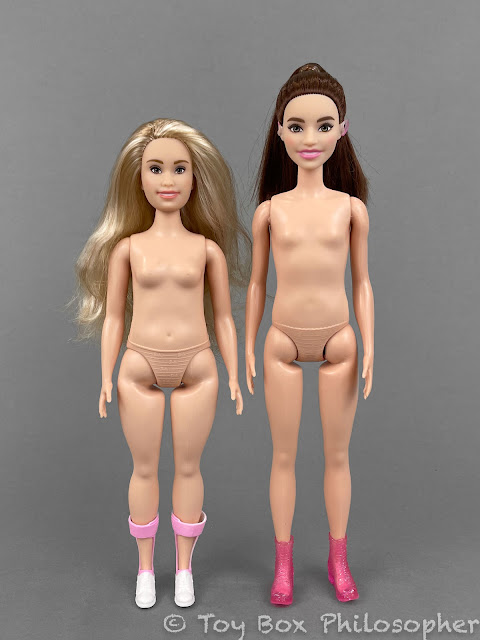 |
| Fashionista 208 (left) and Fashionista 187 (right). |
There are more subtle details in Stella's body design, too, like the single crease on the palm of her hand--another common Down syndrome trait:
People with trisomy 21 often have low muscle tone and weak ligaments that can cause pain and fatigue in their feet. Orthotics help with this, and so Stella has her own fashionable pair of pink braces!
Stella's face mold is completely new, too. She has slanted, almond-shaped eyes and a flat nasal bridge, making her easily recognizable as a person with Down syndrome:
She also has small, rounded ears and a short neck (or short by Barbie standards, anyway):
And with all of those features put together, Stella is absolutely beautiful!
I really love her colorful floral sundress and her pink arrow necklace, which symbolizes the three chromosomes in trisomy 21:
She has long, soft, two-toned blonde hair:
This saran hair is easy to manage and almost always looks good.
Stella was one of the best surprises from this group. She is an absolute delight.
I hope Mattel will use this new face and body mold to make a whole range of Down syndrome Fashionistas.
Stella's dress has a butterfly pattern because butterflies are a symbol of Down syndrome, so for her last portrait I decided to give Stella a little butterfly friend, too:
The next doll that I'm going to look at is technically a Fashionista, number 194, but she's very different from the other Fashionistas in this post.
First of all, she has a Made to Move body, and that's a necessity because of her wheelchair!
 |
| Fashionista 194. |
I think the suggested retail for this doll is around $23, but I found her on sale for $15.
She comes in a large blister pack with a nice graphic of the character on the front:
I'm going to name her Nikki.
The back of the box has a photograph of eleven Fashionistas, including Nikki and two other dolls with wheelchairs:
Nikki comes with her wheelchair and a bright pink ramp that I assume is compatible with the Dreamhouse:
I put the ramp aside so that we could focus on Nikki and her chair:
Nikki herself has the Made to Move body, as I mentioned, but it has really weak ankle joints, which is always a bummer. Maybe that's why she needs the wheelchair.
I think Nikki has the Millie face, which is extremely common in Barbie world:
Her eyes are really large (especially after looking at Stella) and her face paint is more pixelated than some of the other Fashionistas.
Nikki's wheelchair is pretty great:
It's made out of plastic and hard vinyl and has cheerful purple frame accents.
There's a clear plastic brace at the back of the seat that can be used to hold the doll in place:
But the brace can also be removed:
There are several moving parts to this chair, which is great. Not only do the four wheels move, but there are little brakes on either side that can close over the wheels to lock them in place. Here's the locked position:
And the unlocked position:
The foot rest of the chair is also adjustable, and can lift up:
And go back down:
The upholstery part of the seat has realistic molded details, and even says "Barbie" on the back in hot pink lettering:
Nikki fits well in the chair, both with and without the brace:
Who says being in a wheelchair has to stop you from being glamorous? Nikki can strike all kinds of poses:
She can even pop a wheelie!
The chair does not have any handles in back, but Stella was still able to push Nikki around:
And Nikki can give some pretty fun rides, too!
At the risk of overkill, I figured I could also show you Chelsea in a wheelchair:
This set also comes with a ramp, and even includes some stickers for Chelsea to put on the back of her wheelchair:
Again, I assume that the ramp is compatible with the Dreamhouse, but did they really have to specify that the house isn't included?
 |
| No kidding. |
Here's everything that was in the box:
But I'll focus on the Chelsea and her wheelchair:
This girl needs flower name. I use flower names a lot, but I don't think I've ever used Tansy, which I think fits this little girl pretty well.
Tansy's chair is not just a miniature of the larger chair--it has some different features.
First of all, the brace on the back of the seat is not removable:
Also, the chair has a hot pink frame:
There are wheel locks on either side that can move, though, just like we saw with Nikki's chair:
And the foot rest can lift up and down, too:
The chair also has a fifth wheel in the very back. This wheel spins, and the whole structure can move from left...
to right:
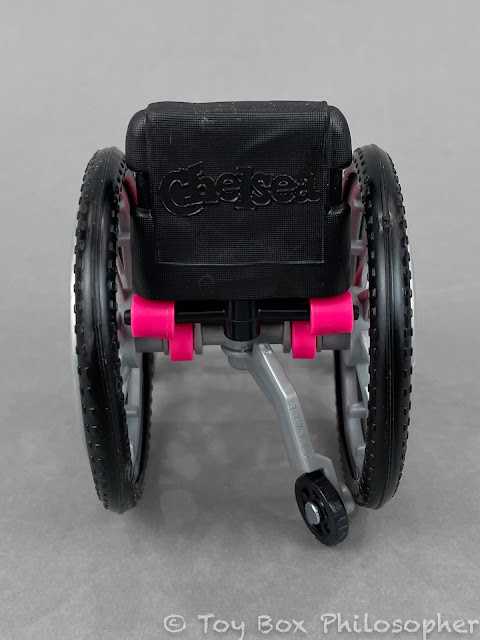 |
| No wheelies for Tansy. |
Tansy herself is extremely cute, like all Chelseas, with big dark brown curls and wide brown eyes:
The top of her outfit is painted on her body, but she has a removable fabric skirt with a colorful heart print:
She also comes with a pair of translucent pink glasses with heart-shaped rims:
Tansy does not have a typical Chelsea body. In order to be compatible with the wheelchair, she has bendable knees. In addition, her arms and legs can both hinge away from her body:
Tansy apparently doesn't need her wheelchair all of the time, either, judging by that last picture. I think she hurt her leg in a gymnastics accident and should be back on her feet soon.
Tansy fits in the chair well:
And the extra flexibility in her body makes her fun to pose:
 |
| That's the leg that wasn't hurt, I guess... |
There are no handles on Tansy's wheelchair, and it's way too low for a standard Barbie to lean down and push:
But Tilly has no trouble helping out!
I'm sorry that Tansy hurt her leg and has to use a wheelchair, but I think it's fantastic that Mattel included a child-sized chair in their lineup.
There's another big category of diversity that I haven't even talked about yet, and that's the LGBTQ spectrum.
This is not an easy thing to convey with a doll, since the way someone looks or dresses isn't necessarily indicative of their sexual orientation or gender identity. However, Mattel has done a good job of designing dolls that celebrate the LGBTQ community.
This doll, who I saw at the Toys R Us in American Dream is a good example:
My picture is pretty bad, so here's the stock image, too:
This character's rainbow coat and gender neutral undergarments hint at an LGBTQ identity in a joyful, unspecific way.
The whole BMR line feels non-binary as well, with their gender-neutral clothing and hair:
There's an LGBTQ Barbie doll whose identity is very clear, though, and I'd like to end the review by featuring her.
This doll is a tribute to the beautiful Laverne Cox, and she is the first transgender Barbie:
 |
| Laverne Cox Tribute Collection Barbie, $45. |
I know Laverne Cox from her award-winning role on Orange is the New Black, but she's also a producer, writer and activist:
Here's a closer look if you want to read the whole paragraph:
The doll is packaged nicely against a black and pink cardboard backdrop with a small photo of the real Laverne:
I love Ms. Cox's quote: "it's important with all the messages that might tell you otherwise, that you have it within yourself to say that 'I am smart, I am beautiful, I am amazing, I am enough.'"
 |
| Amen. |
Laverne comes with a clear plastic stand, but she rarely needs it:
She's wearing an extraordinary wine-red dress with a pleather corset and a dramatic tulle skirt.
Here she is from the back:
Her hair has a pretty mix of colors, but it was a matted mess right out of the box:
Laverne has her own unique face mold that kind-of resembles the actress:
She has realistically-sized eyes that are close-set against a broad nose. She has elegant, understated silvery eye makeup behind long lashes, and her face is brightened by a friendly, toothy smile and full lips:
I brushed Laverne's hair to remove the clumps, but I left the stiff curl on the right side of her face in tact for now:
 |
| That curl is a little weird. |
The hair is soft saran and looks much better after its been brushed!
Laverne comes with silver gemstone earrings, and these have removable protective plastic discs in between the earring and the head:
Laverne sports the muscular Superhero Barbie body (like
Black Label Wonder Woman), with double-jointed elbows and knees that give her great flexibility:
Her red dress is absolutely glorious. I love the drama of the full tulle skirt!
And there are gaps in the tulle on either side that allow a silvery jumpsuit to peek through:
Laverne did not want to stop posing in her beautiful dress, and I did not complain!
The imitation leather corset is a separate piece:
And underneath, the dress has an asymmetric tulle bodice:
Under the dress, Laverne is wearing a white strapless jumpsuit with a shimmering glitter pattern:
Her high-heeled shoes are built into the feet of the jumpsuit:
I think Laverne had even more fun modeling this slinky outfit!
Once I'd taken a lot of pictures with Laverne's hair in its factory set, I finally brushed out that strange curl in the front.
I think this looks a lot better:
And as cool as that leather corset is, I prefer the dress without it:
Which of course gives Laverne yet another look to model!
What an amazing doll.
I wanted to end the review by letting all of the characters from today get together and mingle for a while, and for that event, Laverne thought it would be best if she changed back into the simplest version of her outfit:
As everybody gathered, the first thing that happened was Rebecca ran up to meet Laverne. I think Rebecca mistook the actress for a princess!
Laverne was excited to meet Lucia, too, because she couldn't believe how fast Lucia can walk with her prosthetic leg:
Lucia, in turn, wanted to meet Lena, because she thinks they might be related:
 |
| Definitely related. |
Meanwhile, Lena was excited to try out some of her ASL on Justine:
But Justine only wanted to dance around with Chloe, who was the life of the party!
Chloe made sure Nikki was wheeled into the center of the action:
And Naomi made her feel very welcome there:
Tansy thought Naomi's skin patterns were the coolest thing she'd ever seen:
But the teddy bear that Rebecca gave her was the biggest hit:
...that is, until she saw Stella's necklace:
Stella got along with everyone. She bonded with Lucia over their "bionic" legs:
And she giggled over their height difference.
She also decided that Laverne gives the best hugs of all time:
I'll end with one of my favorite pictures of the day, and one that sums up the happiness I felt as I got to know this wonderful, diverse group of dolls. Here are Justine and Rebecca sharing a joyful embrace:
Bottom line? I mentioned at the beginning that this would be less of a review and more of a showcase, so I have just a few things to say. I've never really paid much attention to Mattel's Fashionista line. This is mostly because the dolls are so minimally articulated; I just assumed that I wouldn't have any fun with dolls who lack arm and leg joints. But I was wrong. What I missed is that it's within the Fashionista line that Barbie's diversity, equity, and inclusivity are exploding. And that's a wonderful thing to see.
I spend so much time critiquing little things like number of joints, hair quality, clothing construction, eye realism...you know the drill. But for the past several days, it has felt really good to just relax and enjoy some of the amazing characters that exist in Barbie's world.
I love the idea of dolls like Justine, Naomi, Rebecca, Lucia, Stella, Chloe, Nikki, Tansy, and Laverne in the hands of little kids. Not just the kids who look at one of these characters and see themselves, but also the kids who look at these dolls and see something very different. I feel like people are born with open hearts and open minds, and if the diversity of humanity is normalized and not demonized, those hearts and minds will remain open forever.
Barbie might not have started out as a beacon for inclusivity, but she has changed with the times and evolved into a leader. Her message certainly comes through loud and clear with the dolls I showed you today--as it does with the dozens that I didn't have time to include: we're all different, we're all valuable, nobody is perfect, and beauty is everywhere.
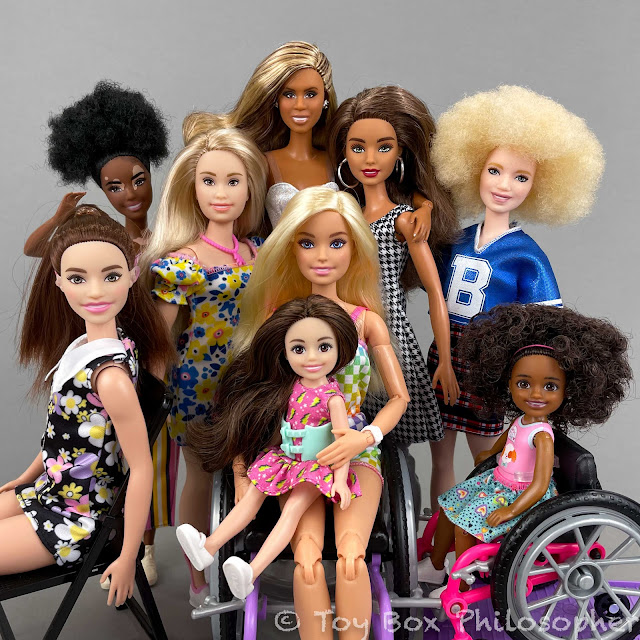


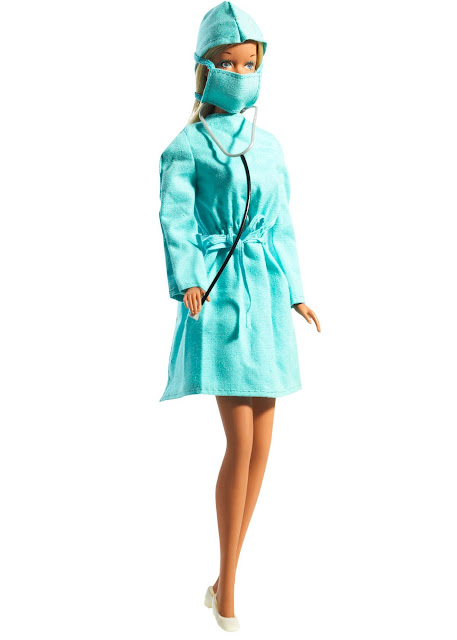













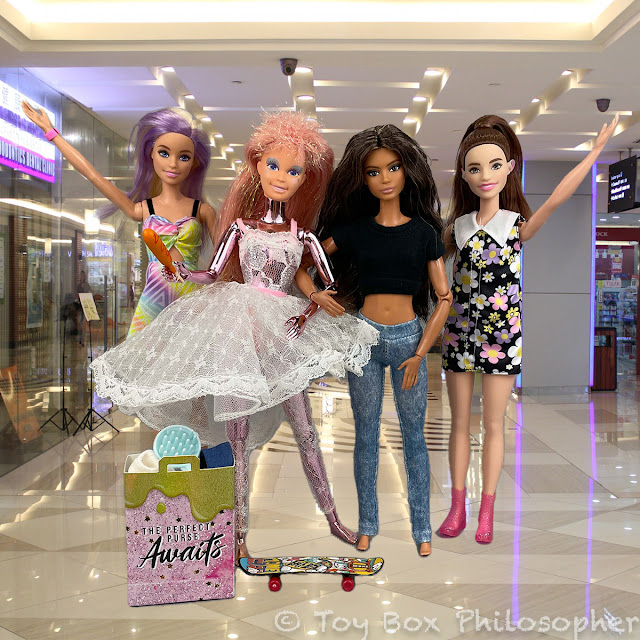
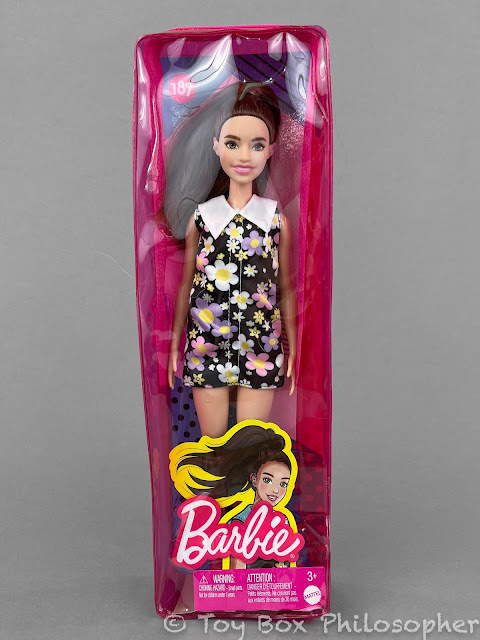




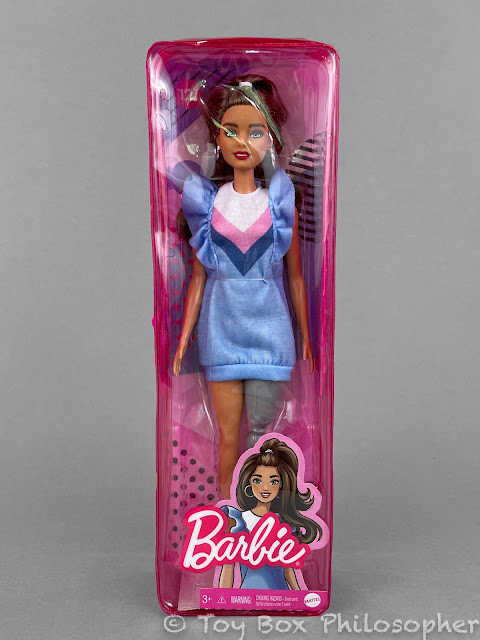















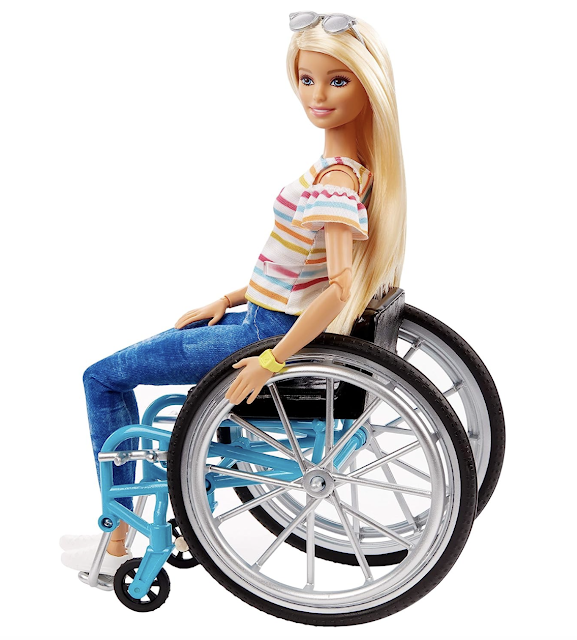

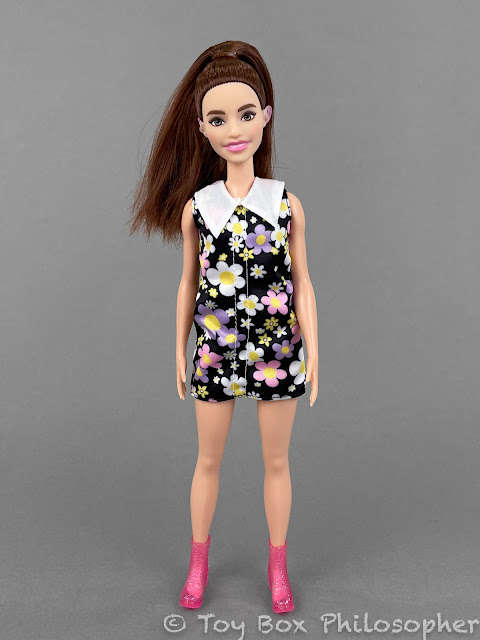
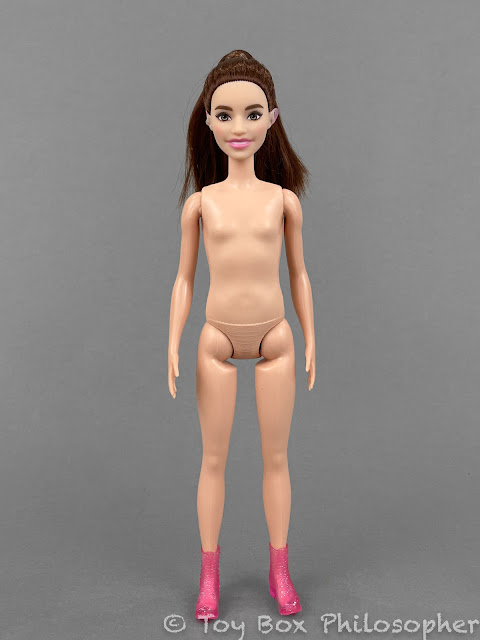





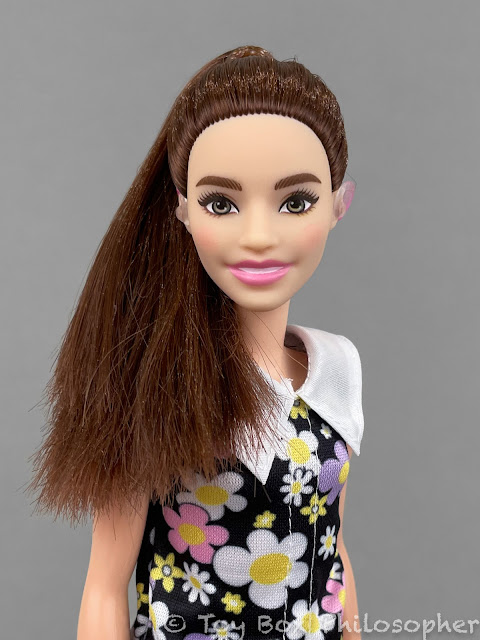
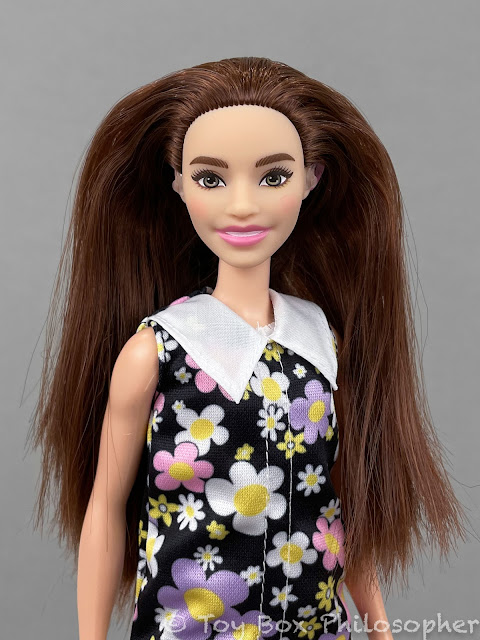


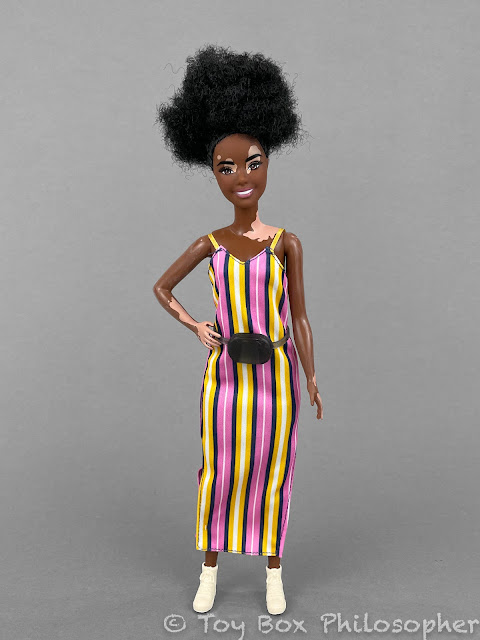















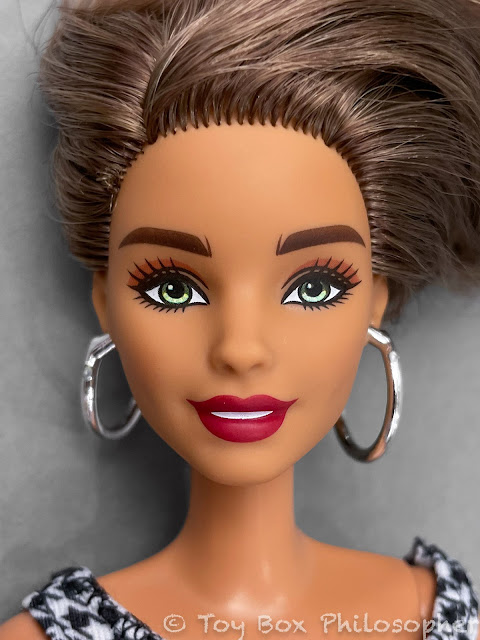
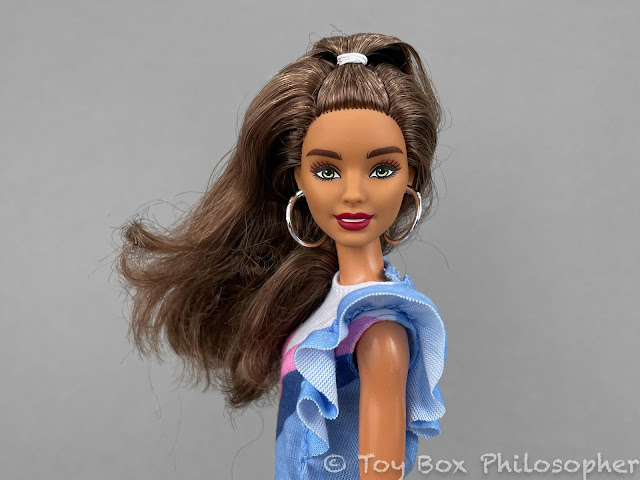


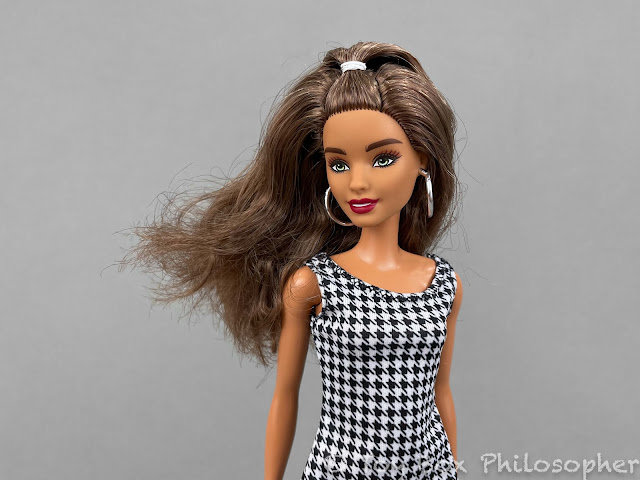





















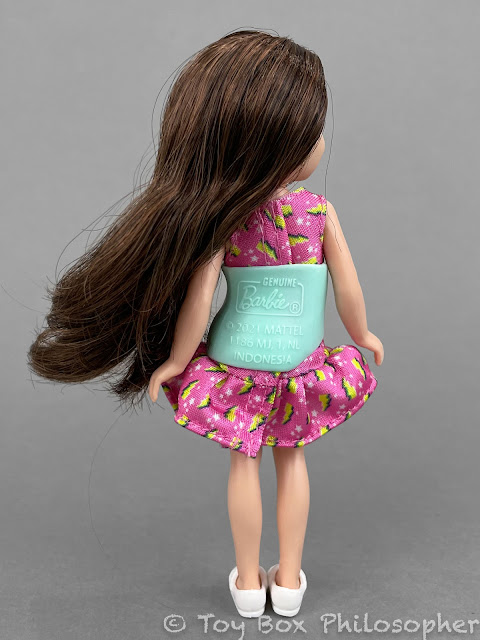




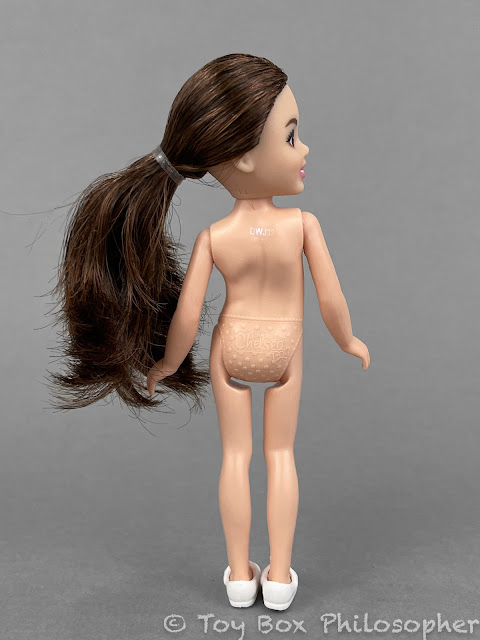


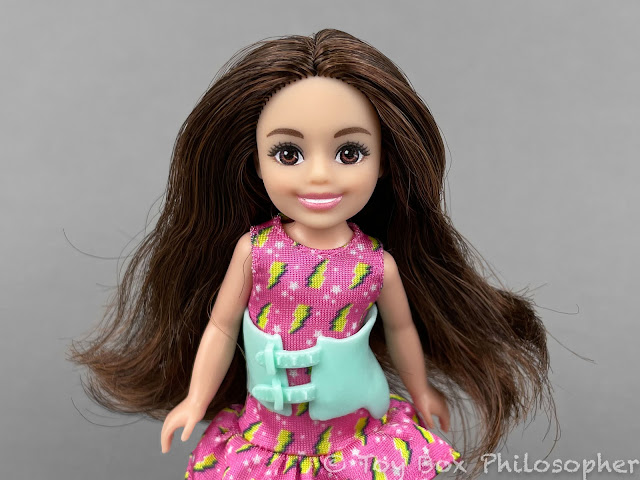
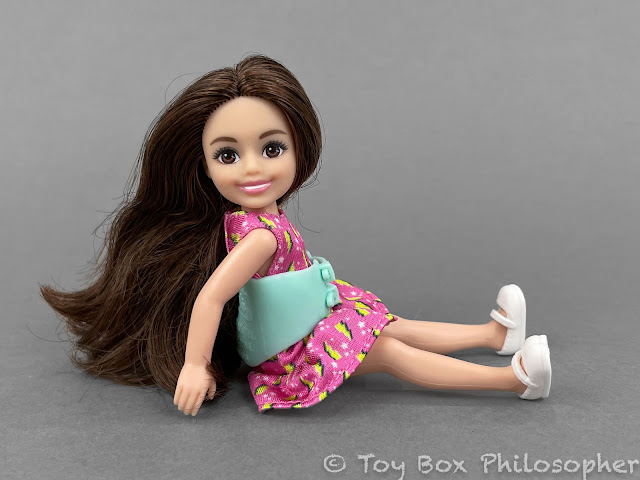







































































































I have so much respect for Mattel's recent efforts at diversity and inclusivity, which feel truly celebratory and earnest in a way lots of modern diverse representation fails to. Even when they don't really get it right, it still feels like they're trying their actual best. I love seeing these unique Barbies showcased!
ReplyDeleteMy eye on doll diversity is anchored around my collection/review focal point of Monster High, and it's interesting to see progress there, too. G1 had its high points with its widely multicultural cast, wheelchair-using Finnegan Wake, and even conjoined twins Peri and Pearl...but I found a lot of MH's non-American cast to border on stereotypical and for diversity overall to be too cute with the representation, such that the diversity was hidden under a monster concept rather than being more open and neutrally unrelated. Other things that stand out to me are that Finnegan was a flawed concept since his merman monster type would need wheelchairs on land regardless of paralysis, and he probably should have been a land monster with legs to cut out that confusion, Jane Boolittle inherited a lot of colonial stereotypes as a mysterious African witch-doctor kid discovered by British explorers, and Isi Dawndancer got backlash and an apology for being only generically Native American and combining tribal iconography which came across as homogenizing the diaspora.
But G3 MH has progressed in a huge way, much like Barbie. Not only are the bodies more diverse than before, but the characters have more complex cultural heritages largely untethered to their monster types, and neurodiverse and queer characters are finally being depicted, and not minimized. I noticed things like Twyla no longer using dreamcatcher icons in her designs too, so it seems like there's overall both greater honesty and sensitivity with the depictions this time.
I recently concluded with my own reflection on Skulltimate Secrets S2 Frankie and Cleo that Mattel's doll diversity truly doesn't feel hollow, cynical and corporate to me...and that gives me more respect and loyalty toward the company. It's so nice to see representation done for what looks like all the right reasons when that can feel so crushingly rare.
You know I always love your reviews, but this one made me cry, really bawling my eyes out. The photos at the end and the last text really touched me and gave me so much joy and happiness and it shows what Barbie really means, and shy she‘s so important. You have really gathered a beautiful group of little ladies there…and now I go and try to find some of them myself ❤️
ReplyDeleteAmazing review, and it touches my heart to see just how diverse dolls are now!
ReplyDeleteOne thing I'd like to point out about wheelchairs is that not everyone in them cannot use their legs. There is a variety of conditions that may cause people to be more comfortable in wheelchairs while still being able to walk and use their legs. One such is POTS (Postural Orthostatic Tachycardia Syndrome) where upon changing of positions such as going from sitting to standing the heart and blood pressure goes awire causing dizziness, fainting and other not fun things. A lot of people with POTS use wheel chairs even though they can walk to avoid the side effects of the condition. I think it's really cool that they have a MTM barbie in the wheel chair so those who are still ambulatory but use wheelchairs can see themselves as well.
I love vehicles and such for dolls -- I would be interested in playing with that adult Barbie wheelchair.
ReplyDeleteAs an aside: I have G3 Abbey, and she still doesn't seem to have been properly released -- Would you be interested in a guest review of her?
What a wonderful review. The scoliosis Chelsea in particular brought to mind my own family member who wore such a brace. As a side note, you mentioned the lack of push handles on the wheelchairs a couple times. Not all wheelchairs have these- Mattel is reproducing the “ultralight” type chair with a low back and doesn’t have handles because it’s intended for the user to propel themselves. It’s nice to have a supportive friend lend a hand with a push at times, but to me, representing this kind of chair is subtly showing the independence that the device gives to the user!
ReplyDeleteOh, I wish they would release MTM dolls with prosthesis legs or arms! And MTM Kens with different body types!
ReplyDeleteAs a doll collector, I'm just excited with diversity. It it really a joy to see so many different faces.
This is such an amazing post! I'm beyond impressed they actually created a whole new mold for the scoliosis doll.
ReplyDeleteI do find it ironic that the 'disabled' doll has more joints (aka mobility) than the regular dolls, lol.
Maybe she has the Barbie version of hypermobility, LOL!
DeleteI like curvy Barbie a lot, but I do wish there was a true plus size Barbie, with a figure like Lizzo’s. Also, I wish there was an in-between option for articulation on the fashionistas, like at least maybe elbows and knees!
ReplyDeleteSo cute! Awesome dolls and very sweet pictures. I agree with the comment above saying that the choice to use a wheelchair without handles was a deliberate and cool choice. My dream would be to see a variety of 1/6 wheelchairs, since different situations call for different chairs, and if the doll is for a child looking for a toy that matches their own chair then it would be nice if they could find a doll in a chair with/without handles, or a power chair, etc. As an adult collector I personally like to stage my dolls for display more often than I outright play with them, but they have their own "characters" and backstories that I style them to match, and being able to give them a variety of mobility devices would be so fun and special to me (I have joint issues and use mobility devices on and off). I do wish Mattel will make more officially LGBT dolls, whether real person likenesses or fictional characters, love the androgynous fashion and the few officially LGBT dolls we have but really hoping for more!
ReplyDeleteI have Fashionista 121 "Lucia" - But I've named her Chrissy and given her a whole story. She was a Marine, lost her leg in the line of duty in an explosion and was discharged. She had a hard time transitioning back to civilian life and getting used to her new normal, which was made easier by some kids she met (who also had/were learning to use prosthetics) when a friend convinced her to go to the childlren's hospital and volunteer. She's now a gymnast (using skills she learned in gymnastics as a kid/teen) who coaches a team for kids who have limb differences like hers.
ReplyDeleteChrissy puts her heart into working with her kids every time they have a practice or a meet and her kids are her new mission, her reason to keep going.
--That is, I'm a writer and the recent diversity in Barbie has made forming new characters a ton of fun for me. I do also have two dolls I've designated hearing impaired but I chose them well before I even knew Justine was going to be made. May have to add her to the group.
I had the good kind of chills by the end of this review. Your showcase and the Fashionistas line in general highlight the beauty in diversity. Mattel doesn't do everything right, but I really appreciate that they have stayed committed to this effort over the past six years. It feels like.the new normal for Barbie.
ReplyDeleteOh wow. My heart skipped a beat when I got to the part with the scoliosis doll and saw you named her Rebecca--because I have scoliosis and that's my name! That's almost scary!
ReplyDeleteBecky'sTwinn
Emily, I have a story to tell you. I've been following your blog for nearly a decade, but this is the first time I've commented.
ReplyDeleteI've had an interesting relationship with dolls over the years. I didn't grow up particularly liking them. I had a couple of baby dolls as a toddler, Sophie and Lucy, but they meant absolutely nothing to me. I didn't love them. The only reason I remember their names is because there were only two. I inherited my cousins' ancient Action Men and Action Girl dolls, which I loved because they had good articulation and therefore the stories I could tell with them could be much more interesting. I didn't like the lack of articulation in the Barbies of those days. I was never interested in fashion. I hated clothes shopping of any sort. The one time I actually did get into Barbie dolls was around the time the ill-fated Happy Families line came out (omg a pregnant lady with a proper baby? GRANDPARENTS???). Later on, I moved to the Sims games, where there were no restrictions in customisation.
I genuinely believe kids do want diversity in their toys, because that makes them more interesting! I loved all my little Playmobil figures with a wide variety of hair and skin colours. I loved my Lego Belville figures with their amazing articulation. While I didn't really have Barbies, I did have a selection of 1:12 rubber horses called Julips. The horses were the stars and were hand-made in England. Their riders were mass-produced in factories. They were all Caucasian, blonde, and blue-eyed, and they all had the same face. And I absolutely hated them. But they were my only option, as they were the only dolls on the market at the time flexible enough to ride the horses. I remember having a conversation with my mother about the possibility of dyeing the dolls' hair with tea to make at least one dark-haired like me, because their lack of individuality annoyed me so much. It was a great joy when nearly 20 years later, I discovered the doll customizing community and learned what I needed to do to make these dolls different. I took off their identical blonde hair and made my own from wool. I removed their horrible identical faces with acetone, and did my own.
I've heard some people criticize the Lammily doll, saying that she only exists to be the anti-Barbie. And while I'm not in total disagreement with that, I am so pleased that it galvanized Mattel to invest more into diversifying the Barbie line, representing people with different abilities and conditions, of varying ethnicities and bodies and backgrounds - because that's people! That's humanity! No one is identical to another person, not even identical twins! I think the earlier we introduce these concepts to kids through their media and toys, the more comfortable they will be. Obviously it empowers people and kids who identify with all these different dolls, but it is also important for kids who fall into the 'white middle-class' default, or who have no disabilities. Let's just say if I had seen a deaf person on TV when I was a little kid, I wouldn't have been so afraid when my cousin brought her deaf friend over for Christmas (in my defence, I was four years old). If I had played with a doll which was gender-neutral, or a doll with a 'masculine' body type in a dress, it wouldn't have taken me so frustratingly long to be comfortable with those concepts.
I worked in a toy shop for the last few Christmases, and I've found the doll aisle so fascinating. I've looked at all these unique dolls and dolls with great articulation, and I think of how much I would have loved them as a kid. I will never be a doll collector, I don't think, but I do find them interesting, and I find listening to people who are in the community interesting too. I have even invested in a curvy MTM Barbie, and customized her into a mini-me! I couldn't have done that if you hadn't shown me these new dolls existed!
So thank you, Emily. Here's to the ever-diversifying nature of dolls!
I started tearing up at Stella, and it was all downhill from there! (in a good way!) I had Share A Smile Becky as a kid, and she was my all-time favorite Barbie doll. It makes me so happy whenever I see how much more representation there is on the shelves!
ReplyDeleteBarbie definitely seems to have a huge lead here, but I've been equally as excited to see other lines bringing in more inclusive dolls and playsets (like Rainbow High's Jewel Ritchie, or a lot of the American Girl playsets - like the tiny insulin pump!) I hope to see many more in the future.
Thank you for the wonderful review, as always!
Had to smile at the commenter mentioning never having seen a deaf person on TV before actually meeting a deaf person. I take it this commenter is British, from the clues in the post? Well, in the US, Sesame Street was way ahead of the game when it came to diversity; the show began in 1969 and almost from the beginning one of the main human adult characters was a deaf woman named Linda, who used sign language and, I believe, once demonstrated an adapted (very outdated now but probably cutting-edge for the time) telephone.
ReplyDeleteThey also had one of the human child characters be a little boy named Jason who had Down syndrome and was the son of one of the show's producers. He was a regular among the kiddie cast for a few years, and came back as a young adult for a reunion-type special. There was also a blind Muppet named Aristotle (he didn't last very long, as some of the Muppets didn't) and at one point, Mr. Hooper (before he died) had a visiting niece who was blind. Her name was Krista. I also think Maria had a blind friend at one point but can't remember her name. I want to say Chris, but I don't think that was it.
Emily, talking of alternatives to the traditional Barbie, have you ever heard of the Dusty dolls? They were made briefly in the seventies to be a more outdoorsy, athletic counterpart to Barbie. They were taller and larger overall than Barbie and there were lots of accessories, including horse-related, tennis, golf, and lots of clothes. Some people thought she was gorgeous and some thought she was ugly, but she was pretty popular for a little while.
I personally adore the Dusty and Skye dolls and was seriously considering adding them to my collection but their condition issues scared me off! I know collectors have various ways of dealing with the "melt." It's a shame that several dolls from the 70s suffer from similar condition problems as they age, including Barbies I believe. I still think Dusty and Skye are funny and cute, and I love their history of being interpreted as "lesbian Barbie" by LGBT collectors.
DeleteThe doll you have as vet Barbie from 85 is Pet Doctor Barbie from 96!
ReplyDeleteI have been enjoying reading and immersing myself in your blog for years, I'm so glad this is something you still love doing!
I don't know how I feel about the focus on diversity. On one hand it's nice to get so many different sculpts, body types, skintones and hair colours to choose from. But I so miss the time when dolls came with NAMES on the box. Nowadays they are churning out so many dolls that even the new sculpts are nameless, with only code numbers like some unremarkable asteroid. Good sculpts and styling choices get lost in a sea of dolls. I'm sure it would be possible to still have variety while keeping a small cast of core characters. There could be diversity in career dolls, and the core group could have some variation in sculpts and hair styles. But of course, this would require more resources going to trademarks, stories, continuity etc. And we know Mattel likes to keep things as cheap as humanly possible. I guess we should be thankful to have front and back patterns on dresses again?..
ReplyDeleteI am drawing a blank on ability diversity. As a child, I wasn't into pretend play and didn't understand adult-looking dolls. My dolls were my "children" and I didn't care if they looked like me or represented me or anyone I liked. We occasionally had dolls with factory defects, missing eyes, fingers or hair. One had prominent scars from melting on a stove. We still played with them, of course, but I can't imagine getting a doll with a disability because of the disability or other distinct physical particularity. That being said, I like the wheelchair dolls and wish there were more disability accessories that are not tied to a particular doll. For example, if the hearing aids could go into standard ear holes, or limbs could be removed at the elbow/knee to allow a prosthesis to be attached. Insulin packs, colostomy bags, extensible white cane, service dog with vest, back braces that could be attached to a standard body (because we can pretend the scoliosis is almost cured). I can see how children could use these accessories to understand disabilities better and feel more motivated to use their own aids.But I think they should be sold separately from dolls. What if I find the smile creepy? If I hate the haircut? If the combination of features reminds me of someone I don't like? I could not dare criticise any doll with a disability for fear of passing as ableist.
I would argue that the way the dolls are doing it now is more respectful and impactful than being able to hand-select disability features would be. With dolls that have fixed styles and aspects of disability, it realistically depicts that disability is part of the package of a complete person, and that accepting them is about accepting all of them. If Mattel sold parts and made disability features "modular", it'd run the risk of disrespectfully objectifying disability by treating it like dress-up or accessories, which isn't how it works for real disabled people. I don't know per se if kids are seeking dolls out *because* they are disabled characters, but the way the dolls have more to offer than their disability and have the disability as an inseparable part of them creates a more realistic portrait. They're characters that can attract people for who they are, not just what they are, and their features of disability aren't treated as optional or frivolous.
DeleteIt might be person-by-person, too. At my own toy store, which has the Barbie with the prosthetic leg, a little girl was extremely enamored with her and thought she was pretty, and was even excited by her "broken leg". Maybe she didn't fully "get" the depiction, but it seems like this representation is appealing to some kids.
And I don't think you should be afraid of fairly criticizing diverse dolls if you don't like some of their traits, as long as you're in good faith and not getting upset that they're diverse.
You make a valid point of course. I was focused on the angle that is usually pushed with this kind of dolls - if you have a disability, here's a doll that is "just like you". Imagine waiting for years for a doll to portray your disability, only to find that its features don't appeal to you at all! Again, this is a hypothetical scenario - I've heard kids like dolls that represent them. I personally don't relate to that - I choose my dolls for purely aesthetic reasons. I agree that the various ability differences can be integral and treated like variation in body types instead of a removable accessory, at the same time there's no reason both approaches couldn't coexist.
DeleteExactly what i've been thinking! diversity dolls are great but it would be awesome to also have *doctor office with all these medical assistance packs esp wheelchairs & braces they would fit lot of dolls!
DeleteI thought your comment was interesting because as a child I typically ignored the name and story on a doll's box. Sometimes I kept their name, but I made my own characters. As an adult collector I still tend to prefer dolls without much "character" or to ignore the story behind the doll, I'm not really interested in things like tie-in shows or movies for the most part, unless they interest me for their own sake. So dolls like these, who are just cool dolls and have various traits different than each other, are actually the kind of thing I liked when I was young. I would actually also like to see more disability-related playsets that can be used with any doll within a certain scale or size range, but I think these will appeal to kids too. I can see what you mean about the option of a playset being more open for kids who want to make disability part of an already beloved doll, or one who resembles them. I think both approaches are cool to see!
DeleteThank You for Wonderful review diversity is fun!💖
ReplyDeleteThank you for this beautiful review and showcase of what Barbie is getting exactly right. I collect toys and dolls other than Barbie in addition to Barbie herself, and one of the reasons I love Barbie in 2023 is the fact it's the most diverse doll line ever. Period!
ReplyDeleteTo those that can't see past their own privilege and sniff at the importance of diversity and how it's not important to kids because it wasn't important to them and isn't as an adult collector, please sit down and realize it's not only about YOU but millions of people, including children and apparently there are people in 2023 who still shrug off The Clark Experiment (or "the doll tests") and its many modern recreations that prove representation truly matters in toys and dolls. A toy can be diverse AND have great play value and Mattel is clearly at least trying for both.
Barbie is for everyone and Barbie IS everyone and I'm so glad Mattel is approaching it that way both in the movie and in their dolls. More toy companies could stand to follow suit.
Have you ever seen the Lottie doll with Down syndrome? Her name is Rosie Boo, I love her :)
ReplyDeleteWhat an absolutely amazing review, and what an assortment! I really have go hand it to Mattel for putting their money where their mouth is and really and truly making it clear that Barbie is meant to be all of us. I remember tipping my hat to them when different body types were introduced, as that was pretty unheard of at the time, but this is a while other level. Multiple dolls with mobility devices, hearing aids, braces, skin tones, genetics, prosthetics. Just the absolute works!
ReplyDeleteAnd to not only do that,but make these actual mold differences in each doll, instead of just putting an accessory in top, or mentioning it in text? Beyond. :)
I had to keep some of your photos in tabs to mention specific things, there was so much to remember.
Vintage Nurse Barbie struck a big cord with me, both my grandmas had that exact uniform, little cap, cape and all.
The face on that vintage black Barbie is so sweet, I'm completely charmed by her! She made me smile immediately.
That catalogue style pic of the fashionista line up really makes barbie seem like a real person to me the way a sea of blondes never did. It genuinely feels like a stylized crowd.
Love that pic of the doll with ds encountering a butterfly. Her dress is so cute and the little insect is super on theme. She's still a Barbie and as such, very stylized and pretty, but her differences are visible and clear, and add to what makes her pretty,instead of making her othered. Bravo to the sculptor.
That Barbie Extra with the rainbow fur jacket is an absolute delight, love it! Especially with the poodle, they're quite the pair!
The Laverne Cox Barbie doesn't quite capture her face, but I loved that actress in Orange is the New Black, and I'm delighted she exists. Having her as a glam celebrity style barbie, and a person, first and foremost is really nice to see for LGBTQ+ rep. I saved your photo of her quote, it's the kind of thing I need to read some days for a boost. And that body suit with the built in boots, what a neat piece of barbie couture!
Phew, I think that's everything. Thanks Emily!
Hi, there, I've spent a peaceful week enjoying your gorgeous photos on my lunch breaks and enjoying your commentary on them. Has anyone brought your attention to the Latinista and Naturalista lines of fashion dolls by purposetoys? The one I bought on sale years ago was more articulated than the Barbies available at the same price point - I don't know if that's still true. And the ones in my local store mostly have your nemesis curly hair, but it looks like not all of them do. You've said things in other doll reviews about liking the smaller companies filling niches where they see the need and I think purpose toys might be up your alley for that, too.
ReplyDelete